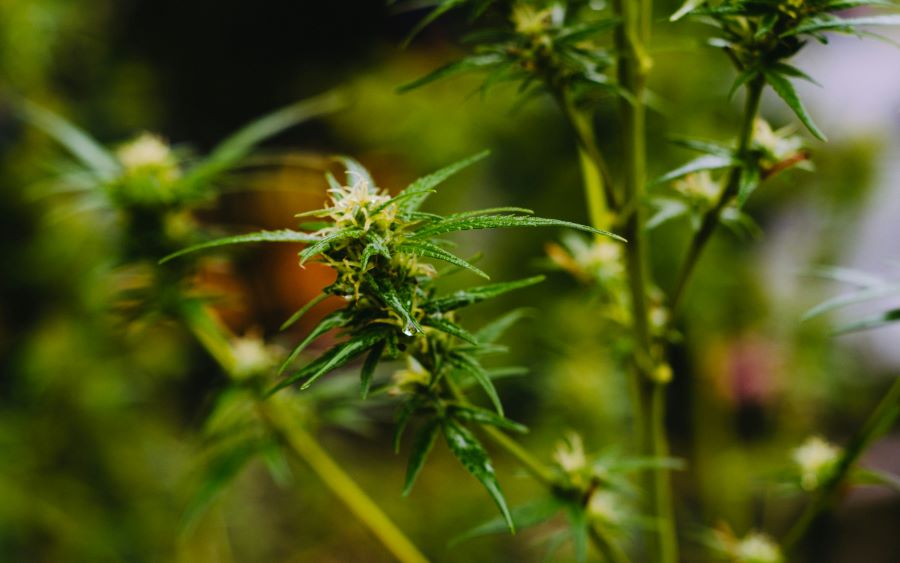Exploring Humulene Terpene: Effects and Benefits
Humulene, an increasingly recognized terpene, has been gaining attention for its distinctive attributes and potential health perks. This piece will navigate through the realm of humulene, unraveling humulene terpene’s effects and delving into its myriad benefits.
What are Terpenes?
But, what are terpenes exactly? Well, terpenes, aromatic compounds found in plants and fruits, not only create distinctive smells but also harbor therapeutic potential. Serving as nature’s fragrant building blocks, plants produce terpenes for defense and to attract pollinators. Limonene, in citrus fruits, uplifts mood and exhibits anti-inflammatory properties. Linalool, found in lavender, induces calmness and relaxation.
Terpenes extend beyond sensory allure, playing a pivotal role in plant survival. Acting as insect repellents or attractants for pollination, terpenes aid plants in recovering from damage. Expanding their allure, terpenes boast potential health benefits, with some showing anti-inflammatory, analgesic, and antimicrobial properties. The entourage effect proposes that terpenes, along with cannabinoids, may enhance therapeutic effects synergistically.
Terpenes find application in various industries—cosmetics, food, and pharmaceuticals—contributing to flavors, and scents, and even acting as natural preservatives. The medical realm explores terpenes for new drug and therapy development.
The Unique Properties of Humulene Terpene
Humulene, an intriguing terpene belonging to the sesquiterpene family, takes center stage. Terpenes, organic compounds ubiquitous in plants, are the aromatic architects responsible for distinct scents and flavors. In the brewing realm, humulene or alpha humulene, abundant in hops, contributes to the beloved spicy, earthy, and woody notes in beer. Beyond hops, humulene graces other natural sources, including cannabis, imparting earthiness and subtle spice to various strains.
Yet, humulene’s impact extends beyond aroma and flavor. Research suggests anti-inflammatory properties, offering potential for managing inflammatory conditions. Moreover, it exhibits promise in inhibiting certain cancer cell growth, prompting ongoing exploration in oncology. Additionally, alpha humulene’s potential analgesic effects make it a compelling candidate for developing therapeutic interventions in chronic pain management.
Humulene’s distinction lies in its unique chemical composition and structure. As a sesquiterpene, it boasts a 15-carbon atom structure, surpassing the size and complexity of monoterpenes and diterpenes. Intriguingly, it shares a chemical structure with beta-caryophyllene, suggesting interchangeability in therapeutic properties, a notion warranting further investigation.
With its diverse applications and captivating properties, humulene continues to captivate both researchers and enthusiasts, whether enhancing beer flavors or potentially delivering therapeutic benefits.

Chemical Composition and Structure
With a chemical formula of C15H24, humulene’s structure comprises three isoprene subunits arranged uniquely. This arrangement defines humulene’s distinctive properties and potential health benefits.
Natural Sources of Humulene
Abundant in hops, humulene also graces herbs like sage, ginseng, and ginger, as well as specific essential oils. It resides in various parts of the hop plant and is present in essential oils, used in aromatherapy and other applications.
Beyond that, the terpene profile in cannabis strains is a fascinating aspect that adds depth to the overall experience. Terpenes, the aromatic compounds also found in cannabis, contribute to the distinctive smells and flavors associated with different strains. Each strain has a unique terpene composition, influencing not only the sensory appeal but potentially the therapeutic effects as well.
For instance, strains high in myrcene may have a more sedative quality, while those rich in limonene might offer a more uplifting and citrusy experience. The exploration of terpene profiles in cannabis opens up a world of possibilities, allowing enthusiasts to choose strains not only based on their cannabinoid content but also on the nuanced aromas and potential benefits associated with specific terpenes.
Aroma and Flavor Profile of Humulene Terpene
Renowned for its earthy, woody aroma with hints of spice and herbs, humulene shapes the character of hop-based products, contributing to the bitter taste associated with hops.

The Potential Health Benefits and Uses of Humulene Terpene
Research unveils humulene’s array of potential health benefits. Its potent anti-inflammatory properties may alleviate symptoms associated with conditions like arthritis and asthma. Additionally, it shows promise as a natural pain reliever by inhibiting enzymes involved in pain perception. Studies suggest significant antifungal activity, positioning humulene as a potential remedy for fungal infections.
Cannabis Strains High in Humulene
While humulene is present in various natural sources, certain cannabis strains high in humulene offer unique consumption opportunities. Strains like Sour Diesel, Girl Scout Cookies, and Skywalker OG not only promise the therapeutic benefits of humulene but also the combined effects of other terpenes and cannabinoids.
Unlocking the Potential of Terpenes in Cannabis Strains
Humulene’s exploration reveals a captivating array of properties and potential health benefits—from distinctive aroma and flavor to anti-inflammatory, pain-relieving, and antifungal effects. As further studies illuminate its therapeutic potential, humulene stands poised to unveil more reasons to appreciate and explore this remarkable terpene in cannabis strains.





